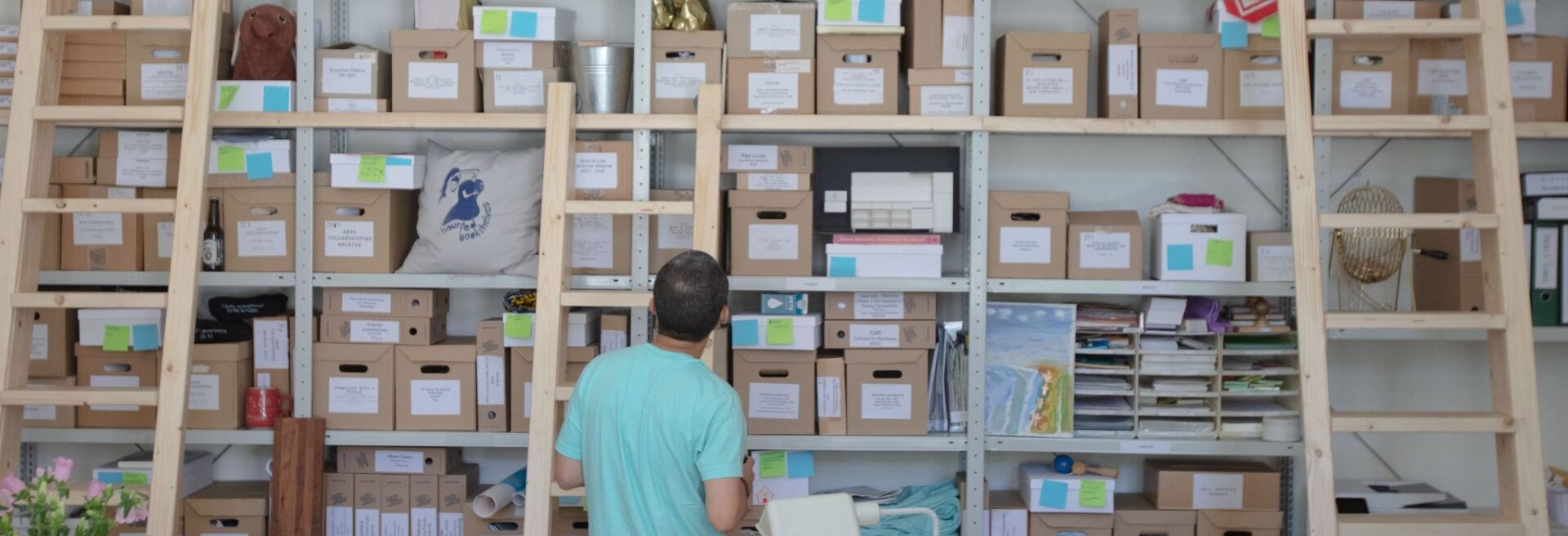
Nina Bell F. House at Casco Art Institute, Utrecht. Installation shots by Chun Yao Lin
Reimagining the institution — The Nina bell F. House Museum at Casco Art Institute: Working for the Commons
Nina bell F. is a representation of collective authorship beyond institutional structure, created out of a desire to emphasize caring, unlearning and commoning practices. Currently, Nina has activated the archive of Casco Art Institute. ‘It can be overwhelming to have open access to an archive’, Charli Herrington realises as she visits the space. ‘But Nina’s activation of Casco’s archive is focused and easy to connect with.’
When I arrived at Casco Art Institute: Working for the Commons, I realized the space had transformed, not drastically, but subtly. I could see more than usual, the inner workings of the office exposed. The floor to ceiling turquoise curtain covering Casco’s archive was gone, revealing boxes, books and objects. The furniture was rearranged and there was a large refrigerator covered with images and notes. I realized I was not in Casco’s office, but in the office of the Nina bell F. House Museum.
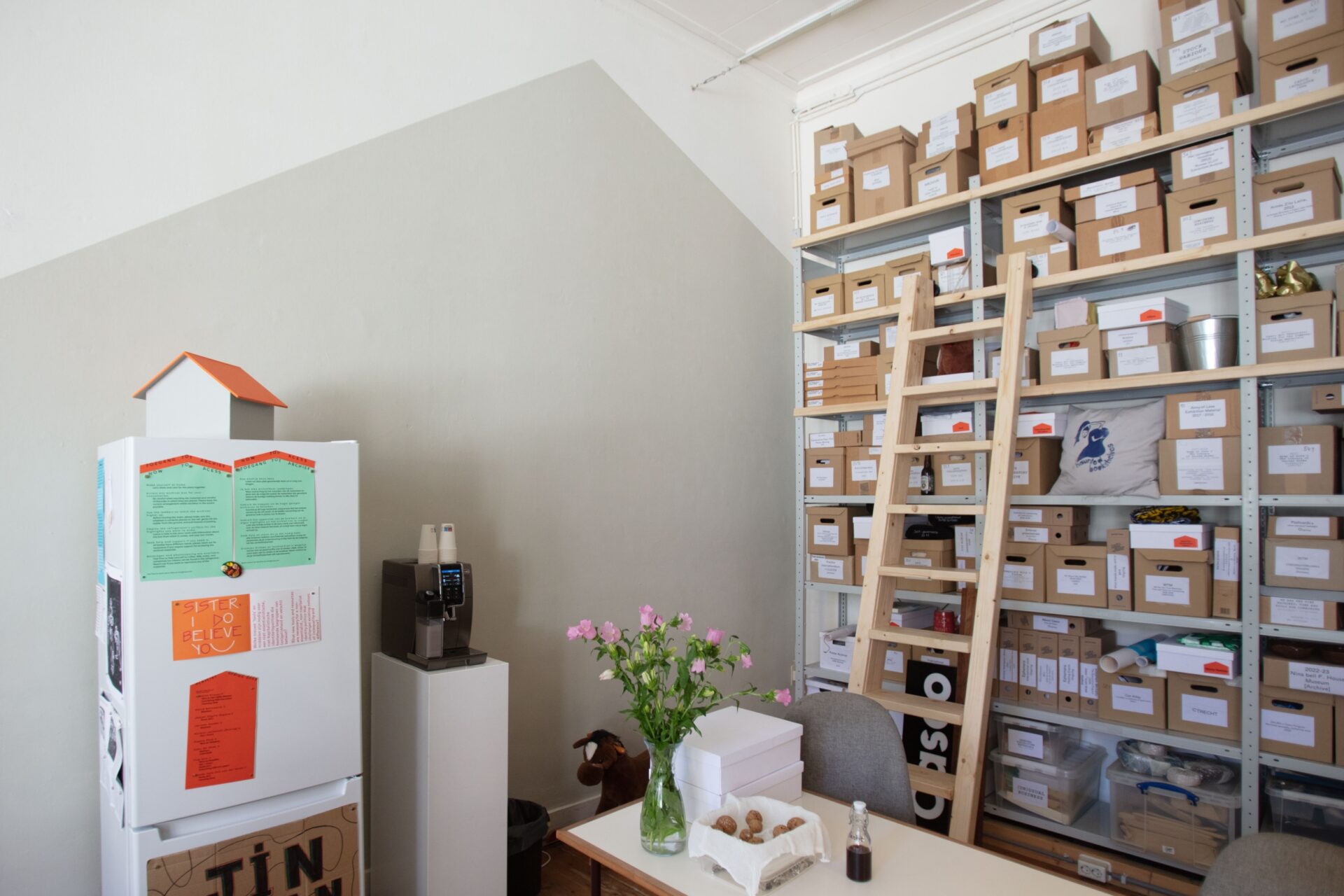
Nina Bell F. House at Casco Art Institute, Utrecht. Installation shots by Chun Yao Lin
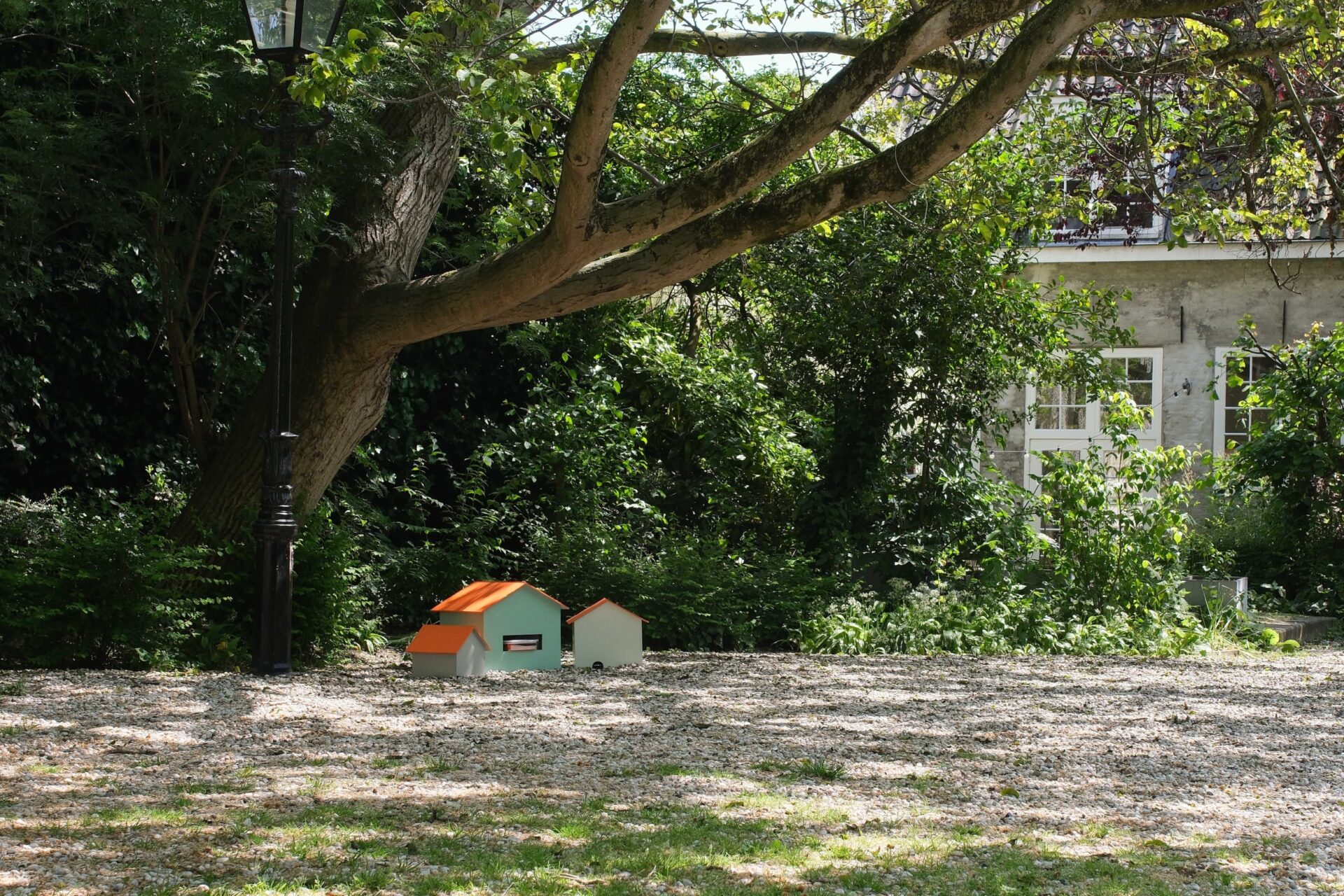
Fermentation Houses by Donghwan Kam. Nina Bell F. House at Casco Art Institute, Utrecht. Installation shots by Chun Yao Lin
I sit in the garden with Marianna Takou and Aline Hernández, current caretakers of Nina’s house. On the far side of the garden, sitting not unlike us, are three small houses with orange roofs, about knee-high, grouped together. I receive an introduction to Nina bell F. and her/their[1] house museum. The name refers to the ‘artistic, Black, feminist and political engagements of Nina Simone, bell hooks, and Silvia Federici’[2], Nina bell F. is a representation of collective authorship beyond institutional structure, created out of a desire to emphasize caring, unlearning and commoning practices.
The first iteration of the Nina bell F. House Museum was at Natasha, the biennale in Singapore (2022). Here, Nina has been interwoven with Casco. Takou shares that Casco isn’t an intuition that has artworks in its archive. You won’t find art in the boxes. Instead you find objects infused by relations and activities.
In Casco’s garden, artist Donghwan Kam has built several fermentation houses— the three that sat across from us. Kam found ingredients from the archive to ferment, like chili peppers from a collaboration with ArtEZ. The fermentation houses are a playful way to reflect Nina’s house. The micro-organisms work together to transform, to preserve, to bubble and to nurture. Another fermentation house stands in the office, containing soy beans fermenting into soy sauce. They are being kept warm inside the house, tucked into a heated blanket.
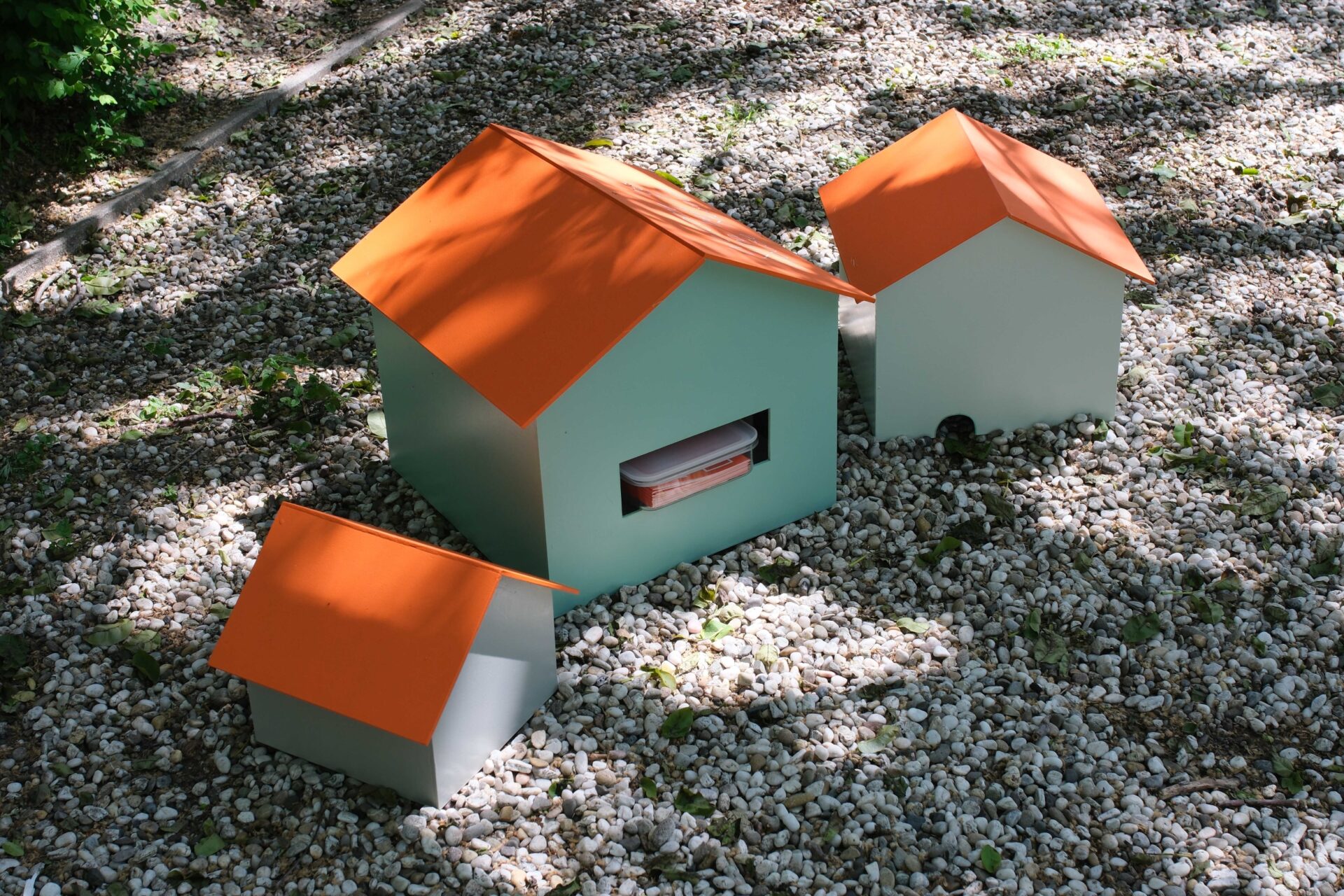
Fermentation Houses by Donghwan Kam. Nina Bell F. House at Casco Art Institute, Utrecht. Installation shots by Chun Yao Lin
In the office of the Nina bell F. House Museum
When you enter the office, you see a wall with white boxes dotted throughout the shelves. These are Nina’s interventions. There is a workspace for visitors: a coffee machine, a lamp, a desk and chairs. The caretakers have highlighted specific parts of the archive through an audio index. You can listen to the caretakers reflecting on their relationship to Nina’s projects and then find the corresponding box. There is information on the refrigerator about how to access the archive. The first step is to make yourself at home.
The curtain that once covered the archive is folded up and is now on the shelf as part of the archive. There are three ladders in its place. Nina allows the visitor to see the messy, maintenance work that goes into sustaining an art institution, which is usually hidden from the audience.
I pick up an mp3 player and start to listen to the playlist by the caretakers. I climb a ladder to find the corresponding box, labeled ‘Nina in Het Vijfde Seizoen’. On top of the box is a wooden ball and cup toy. I set it aside to get the box. When I open the box, I’m pleasantly surprised to be greeted by another ball and cup toy. It makes me curious about the connections within the archive wall. I start to explore the contents of the box carefully, trying to understand the relationship between this box, Nina, Casco and myself. I open envelopes and struggle to put papers back into their plastic sleeves. Within the box are photos of people working on physical exercises, a drawn portrait of Nina and a document titled New Principle of Casco. One line of this document stands out to me — ‘Nina = Life’.
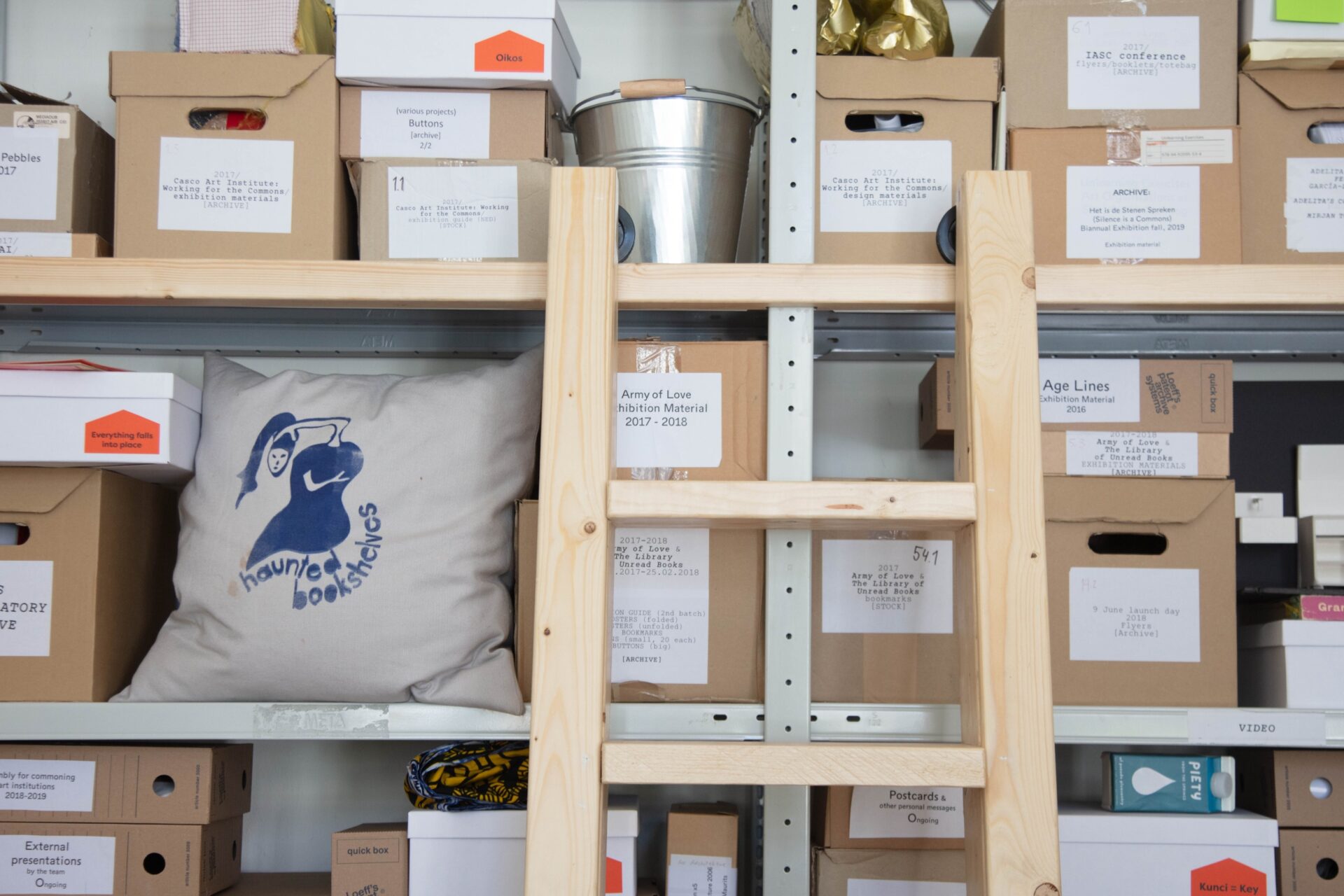
Nina Bell F. House at Casco Art Institute, Utrecht. Installation shots by Chun Yao Lin
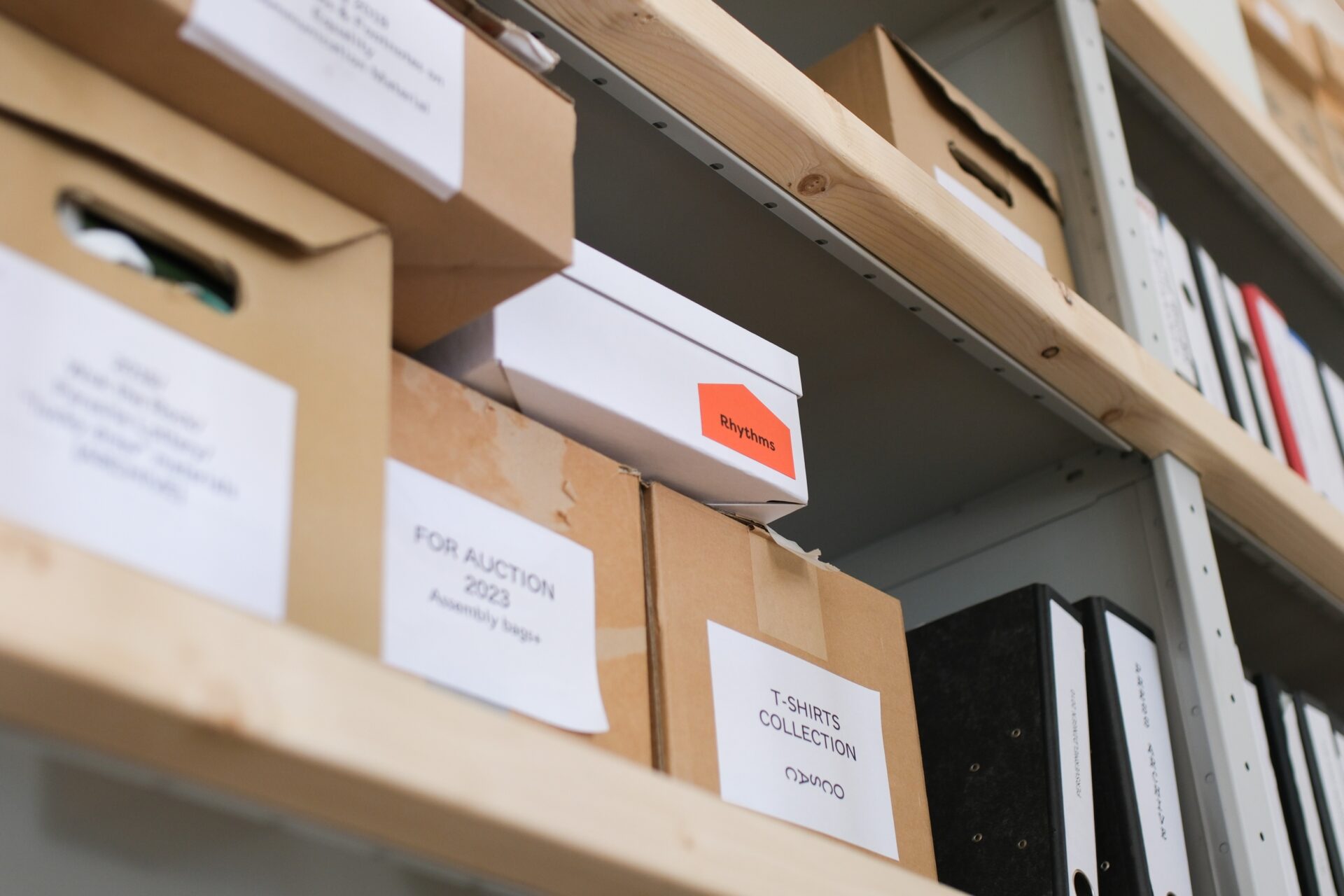
Nina Bell F. House at Casco Art Institute, Utrecht. Installation shots by Chun Yao Lin
A conventional archive holds records, grouped by category. But this archive represents an archive of life (perhaps the life of Casco, the surrounding community, and of Nina). This archive is not organized by rigid guidelines, but by relationships and emotions. The boxes and objects are not evenly spaced and sorted, but are connected by threads created by residents and visitors to this house. There are subtle touches within the archive wall — emotional ones, but also physical touches — the old turquoise curtain touches the ‘Nina and Natasha’ box, touching the ‘Mothers’ box’, touching the box of ‘Ecosystem Pebbles’, touching the ‘Nina bell F. House Museum [Archive]’ box.
The Unlearning Center
The Nina bell F. House Museum continues on the second floor. Upstairs is less crowded than the office — an open space that can be filled. There is room for more.
One room contains the beginnings of the ‘Unlearning Center’ — an educational initiative for unlearning institutional habits, which Casco plans to launch in 2024. The Unlearning Center stems from Site for Unlearning (Art Organization) developed by artist Annette Krauss and the Casco team. The idea behind unlearning is to look critically at normative, oppressive institutional structures in order to focus on engagement and caring practices.

Nina Bell F. House at Casco Art Institute, Utrecht. Installation shots by Chun Yao Lin
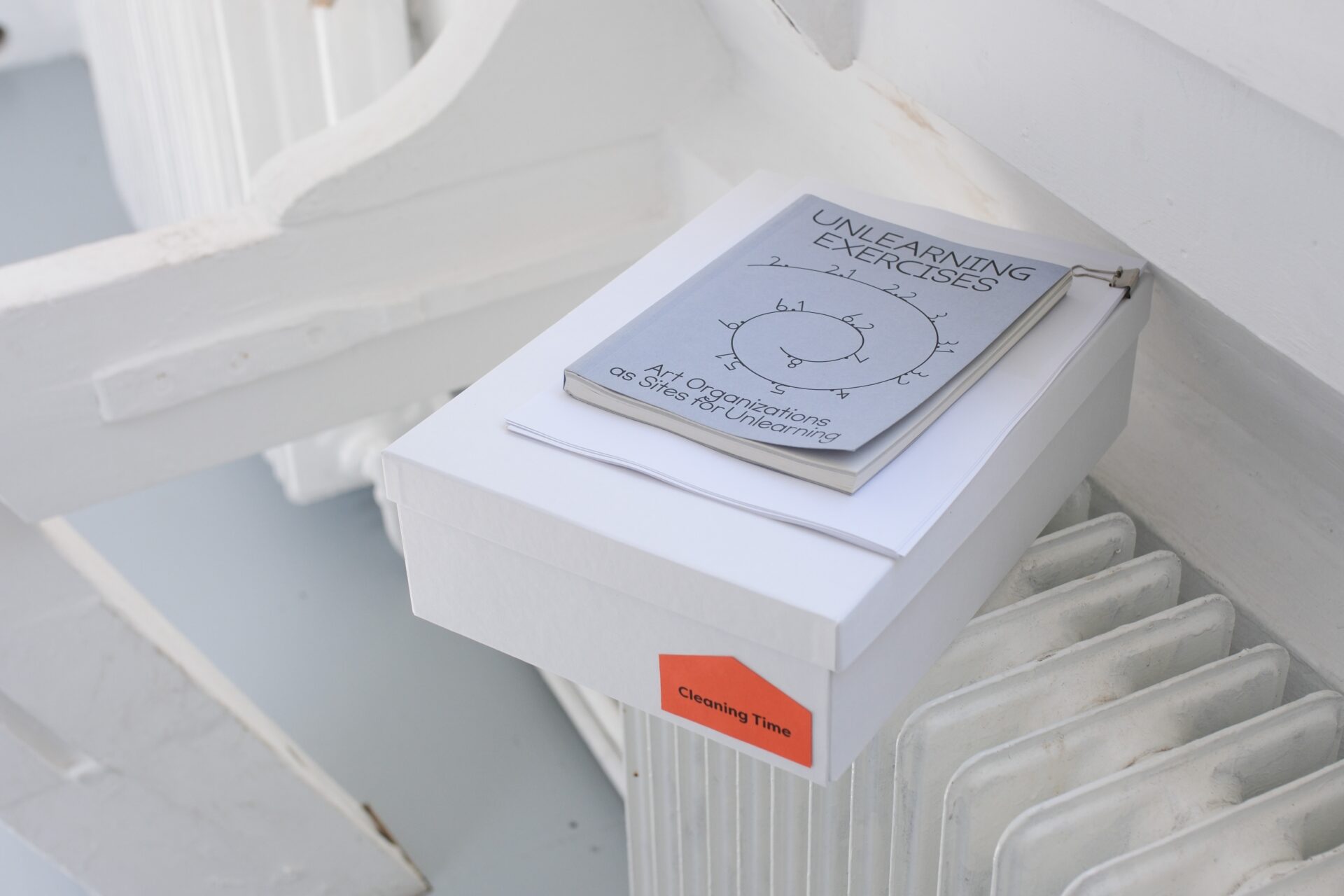
Nina Bell F. House at Casco Art Institute, Utrecht. Installation shots by Chun Yao Lin
I almost miss a subtle detail in this room. A white box labeled ‘Unlearning’ sits inconspicuously on the radiator by the window. It is connected to one of the audio pieces by Annette Krauss that I had listened to downstairs, in which Krauss suggests that it is perhaps better not to ask who is Nina, but ‘to ask when and where is Nina, and then wait and see who turns up…’
Another space contains Replica (2022), an installation by Utrecht-based, Iranian artist Katayoon Barzegar, who has been working on reorganizing Casco’s library. The work, which takes the form of wearable masks, is made from out of date passports, newspapers, and magazines. The materials come from the artist’s own archive and in their embodied form, question how we internalize societal norms and rules.
Printing with Nina at Moria
An annex of Nina’s house is located at Moira Exporiment[3]. In this space you see the work of artist Christian Nyampeta: Scenes from the Revolution (2020). The work is a recreation of linocuts by the participants of People’s Art School in Gwangju, South Korea[4].
On one wall, a selection of carved lino blocks are arranged in a grid, with two towers of piled blocks framing and supporting the display. There are reading materials about the work in between the towers including a walking map of Gwangju with a tour connected to the Democratization Movement.
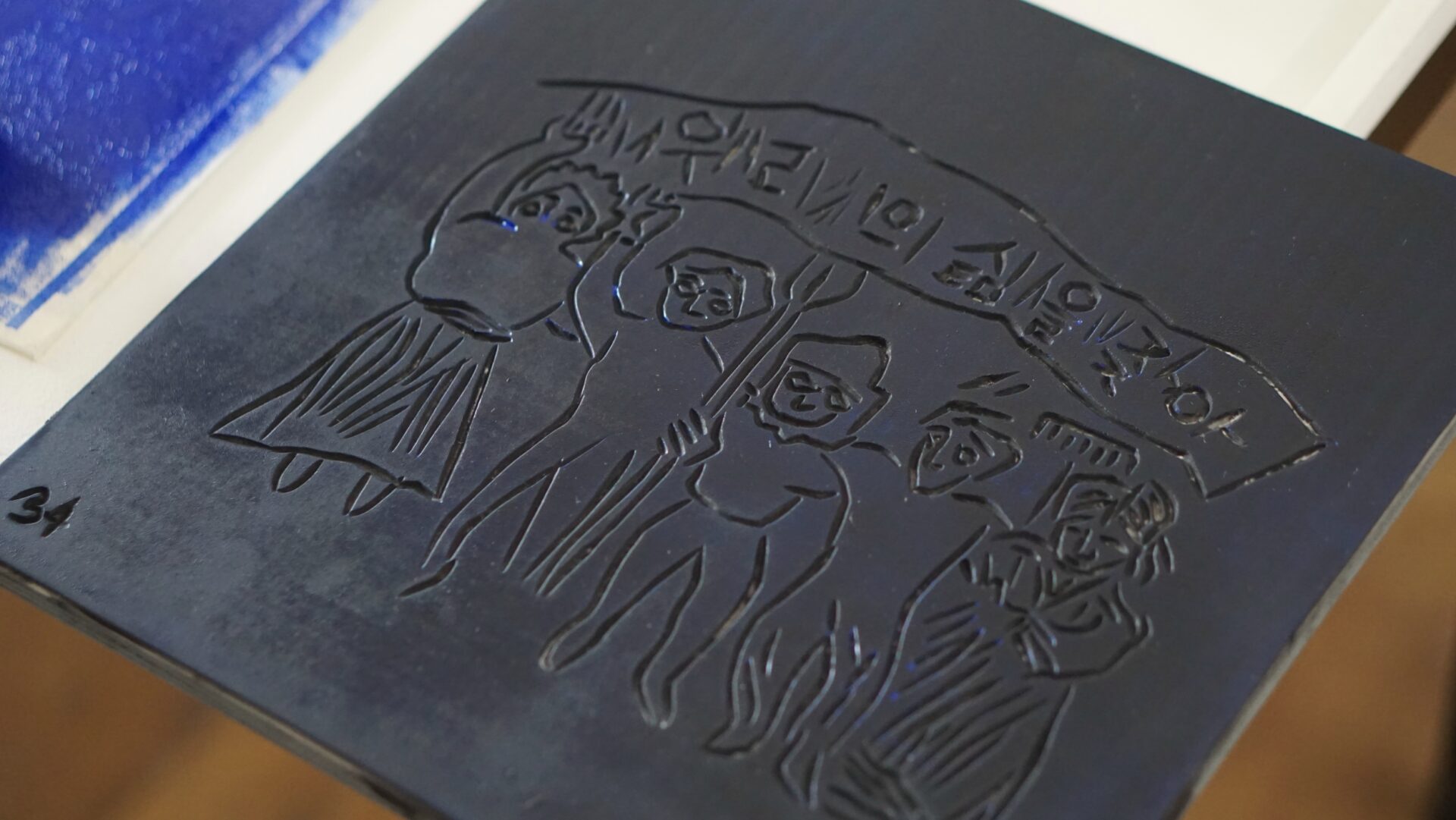
Lithography session at Moira in Utrecht. Nina F. Bell House at Casco Art Institute, Utrecht. Photos by Go-eun Im

Lithography session at Moira in Utrecht. Nina F. Bell House at Casco Art Institute, Utrecht. Photos by Go-eun Im
Visitors can make their own prints of the linoleum carvings to hang in the space, to share or take home. This participatory process removes the preciousness of the printmakers’ work of limited editions, relating back to Nina in that there are many people that have touched this work— the physical traces shown by layers of ink built up on the surface of each lino block.
It can be overwhelming to have open access to an archive. However, Nina’s activation of Casco’s archive is focused and easy to connect with. Everyone involved with Nina and everyone who enters the space, becomes part of the archive— building relations as a way of commoning.
The community behind Nina is always shifting and growing, but those who have been with her throughout her life are still a part of her, actively unlearning, taking care and always creating new ways to work together. As Yolande Zola Zoli van der Heide[5] voices within the audio index of the archive, ‘Nina is the imagination of the institution’.
The Nina bell F. House Museum is situated at Casco Art Institute until 26 November 2023. The extension at Moira Exporiment is there until 30 July. This is accompanied by a program of different activities and conversations.
[1] Nina’s pronouns are she/they
[2] From the exhibition handout at Casco
[3] Part of foundation Moira, a co-housing and community space initiated through squatting in 1983
[4] The People’s Art School (1983-1986) was a creative space developed in response to the Gwangju Democratization
[3] Part of foundation Moira, a co-housing and community space initiated through squatting in 1983
[4] The People’s Art School (1983-1986) was a creative space developed in response to the Gwangju Democratization Movement, also known as the Gwanju Uprising in 1980, a resistance against the regime of dictator Chun Doo-hwa
[5] Former deputy director at Casco and currently a curator at Van Abbemuseum


